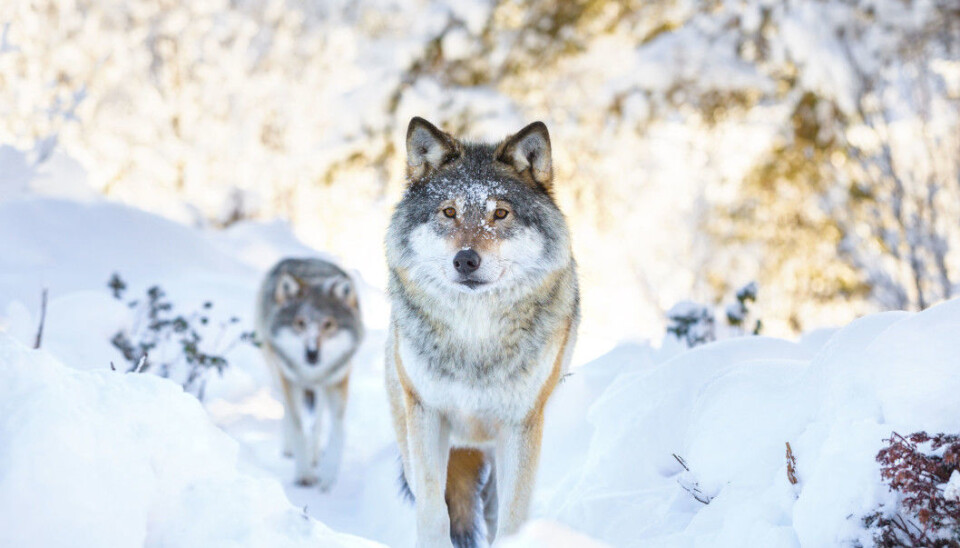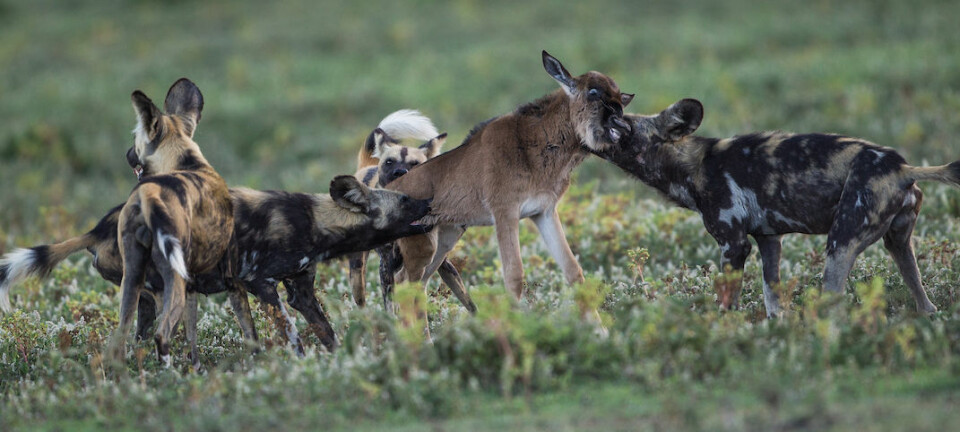
Wolves, but no dogs, in Scandinavian wolf population’s heritage
There is no evidence that Scandinavia’s wolf population has been influenced by dog-wolf hybrids, new research shows.
Scandinavia’s roughly 400 wolves, straddling the border between Norway and Sweden, have aroused controversy almost from the moment a breeding pair came to the region in the 1980s.
The key issue revolves around protecting the animals, which have been listed by Norway as critically endangered since 2015.
Some opponents of how the Norwegian government manages its wolf population have questioned if the animals are a pure wolf species, or if they have interbred with dogs. If Scandinavian wolves were in fact part dog, that might affect the need to protect them.
But new research shows that the Scandinavian wolf population has its origins in wolves that previously lived in the Nordic parts of Europe.
“The lines of descent found in the Scandinavian wolf population haven’t been found in any dogs,” Hans Ellegren, a professor of evolutionary biology from Uppsala University, said in a press release. Ellegren was head of the group that conducted the study.
Tracing origins via DNA
In all mammals, the Y chromosome is inherited from father to son. This pattern of inheritance, called a patriline, makes it possible to follow the father’s genetic line far back in time. Researchers used this fact to trace the origin of today’s wolves.
Linnéa Smeds, a bioinformatist and doctoral student at Uppsala University’s Evolutionary Biology Centre, mapped the composition of the wolf’s Y chromosome. She then compared Y chromosomes from wolves from Scandinavia, Finland and other parts of the world, as well as from dogs.
Interbreeding between wolves and dogs is known from many parts of the world. These wolf-dog hybrids are generally the result of male dogs mating with female wolves.
One such animal was found in Katrineholm outside of Stockholm, in 2017, while another was found in Oslo 20 years ago.
As a result, the Norwegian Storting has raised the question of whether there is any genetic evidence of dogs interbreeding with the wolves that returned to Scandinavia in the 1980s, after the animals had been virtually extinct.
Origins in the region
The new genetic results show no evidence of crosses between wolves and dogs in today’s Scandinavian wolf population.
These animals share the patrilines that are found in the Finnish wolf, but not in wolves from other parts of the world, and not in dogs.
“So it’s plausible that the Scandinavian wolf population, at least in the male line of descent, is of regional origin. There may, for instance, have been migrating wolves or wolves quite simply remaining from the population that once ranged throughout Scandinavia,” Ellegren is quoted as saying in the press release.
Confirms earlier study
“The results from Ellegren's new study are fully in line with the conclusions in a study from 2003, where we examined the origin of the Scandinavian wolf population,” says senior scientist Øystein Flagstad, at the Norwegian Institute for Natural Research.
Both studies concluded that the Scandinavian wolf population has a Finnish-Russian origin.
“The new thing here is that they have obtained data from the entire Y chromosome, and not just used genetic markers as was done previously,” Flagstad said.
“The probability that the Scandinavian wolf has its origins in Finnish-Russian stock is overwhelming. This finding is further strengthened by this study,” he said.
Additionally, researchers have compiled a near complete family tree for the entire Scandinavian wolf population, he says, “which shows that there is no element of dog in the Scandinavian wolf population.”
----------
Read the Norwegian version of this article at forskning.no





